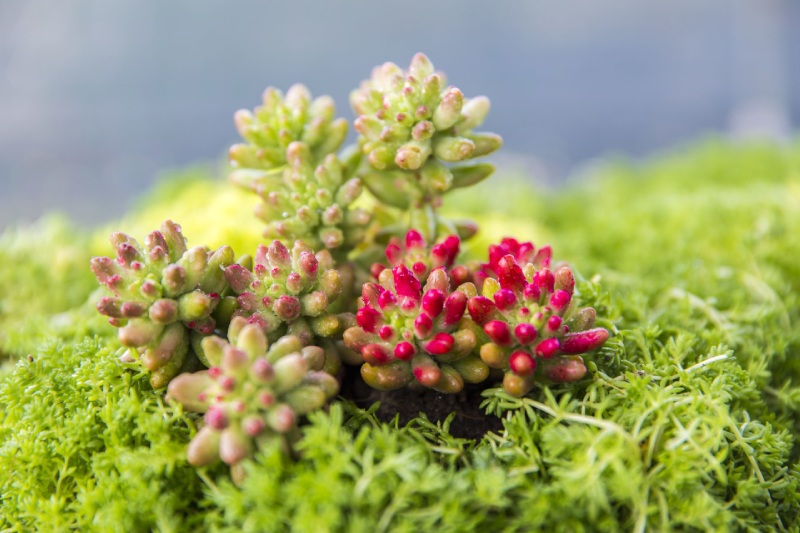Sansi LED: Sustainable LED Lighting and Integrated LED Display
Delivering premium and professional LED Display, LED Lighting, Smart City Integration solutions, trusted by over 60,000 companies worldwide everyday. From industrial lighting to commercial lighting, from outdoor advertising to XR & VR production, Sansi LED greatly improves the quality and sustainability of your business with 30 years of expert experiences.

People want fresh and nutritious vegetables, beautiful flowers and plants in winter. Grow bulbs play a key role in indoor gardening. SANSI introduced a series state-of-the-art grow bulbs for growers to grow plants by using patented ceramic LED technology.

What is Full Spectrum?
Full spectrum means that the beam the plant will be receiving will be composed of a wide range of colors from the lighting spectrum in order to promote better growth. Full spectrum beams will appear similar to natural daylight as they’re both made up of various wavelengths producing a white light. The spectrum of a light is incredibly important in the growth of a plant as plants actually react and grow according to the light spectrum they receive. However, when it comes to growing plants the light spectrum can get complicated as there is not a specific light spectrum to grow plants under. Plants simply reacts differently to each lighting spectrum, meaning you need to choose what type of lighting spectrum will suit your needs and goals. It is important to remember that Full spectrum is not a uniform measurement for a light. This means that not all full spectrum lights emit the same beam. But they do all produce beams with varying wavelengths that are best for your plants.

What Does Each Wavelength Do For Plants?
Due to the fact there is no specific color spectrum for growing plants it would be important to see what each of the color spectrums do for the plant so that you know what specifications you would like in order to purchase a spectrum that matches your goals.
Blue Light (400nm-500nm)
Blue light helps plants grow better. As a whole plants grow towards blue light. However, if a plant or seedling has been exposed to a high amount of blue light it will have short stems and a lot of large leaves. Using a light with high blue light levels is common during the vegetative stage of plants grows as it prevents the plant from growing tall and thin.
Red & Far Red Light (660nm &730nm)
Red light anecdotally has been regarded by plants growers as more effective in photosynthesis for plants than blue light. Red light is within the PAR spectrum is incredibly important for plants. This is because Red Light fits with the absorption peak of chlorophylls. The absorption peak of chlorophylls in photosynthesis produces sugars and carbons which are essential for the growth of a plant. Although plants can just be grown under red light it is a better idea to grow plants under a wider spectrum of light. In regards to Far Red light, it is out of the PAR spectrum, however plants do use far red light for seeding germination and within vegetative and flowering stages. For the majority of stages of plant growth, it would be suggested to have a high ration of red: far red light to prevent the stems from growing too much. However, to promote flowering the plant could be exposed to short term high amounts of far red light to increase the plant’s flowering.
Green Light (500nm-600nm)
Green light has a mixed reception in comparison to blue or red light when to comes to full spectrum grows. Lights do have higher ratios of blue and red light due to their efficiency and effects on photosynthesis. However, it is important not to miss out on green light. A plant exposed to a full spectrum beam will reflect back around 5%-10% of green light and the rest is absorbed. Since green light can be transmitted from one leaf to the leaves below, green light photons are crucial to having well balanced leaves and plants. Although it would stunt the growth of a plant to just grow under green light, recent studies in other types of plants have shown that a mixture of red, blue and green has increased the growth of up to 24% over just using red and blue light! Nevertheless, it is important to state that these studies were not conducted on plants. In relation to the study mentioned, I’ve also noticed that if you grow plants under just blue and red light the leaves will appear darker. To me this doesn’t look as attractive and the plant does appear less healthy. However, I would need to look into it further to find out if this is true.

What’s the SANSI difference?
Strong Light Promotes Photosynthesis
The light-emitting angle is equal to 60° and the lighting is concentrated in one area with strong illumination and good effect.
Full Spectrum, Higher CRI, Growth Promotion
Simulating Natural Light Makes the Lighting Softer
Unique light distribution, soft lighting and good light-emitting uniformity effectively prevent plants from growing too high.

Compared with other grow lights (all competitors use aluminum LEDs), ceramic dissipates heat more efficiently than aluminum because it is non-conductive. Ceramic modules have fewer parts than conventional LEDs, and therefore conduct less heat and generate more savings. Our Ceramic LED Independent Pixel Heat Sink design allows us to increase our photon density (PPF/W) within the bulb.
